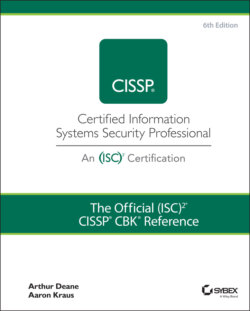Читать книгу The Official (ISC)2 CISSP CBK Reference - Leslie Fife, Aaron Kraus - Страница 134
Countermeasure Selection and Implementation
ОглавлениеMitigation is the most common risk treatment method of the four treatment approaches in the previous section. Risk mitigation involves the selection and implementation of one or more countermeasures (or “security controls”) with the goal of reducing the likelihood of an adverse event or the impact of that event occurring. Countermeasures generally fall into three categories:
Personnel-related: As people are commonly considered to be an organization's “weakest link,” these countermeasures often prove invaluable. Hiring (or firing), organization restructuring, and awareness training are some common personnel-related countermeasures. Despite our potential as weaknesses, people in high-performing organizations with strong security awareness programs can often prove to be the greatest security asset.
Process-related: Policy, procedure, and other “workflow-based” mitigations generally fall into this category. As an example, consider the implementation of separation of duties on invoice approval and payment as a process-related mitigation against cyber fraud.
Technology-related: This is the category that typically gets the most attention. Encryption, modifying configuration settings, and other hardware or software changes are common examples of technology-related countermeasures.
When selecting countermeasures, you must consider factors such as security-effectiveness, cost-effectiveness, and operational impact.
